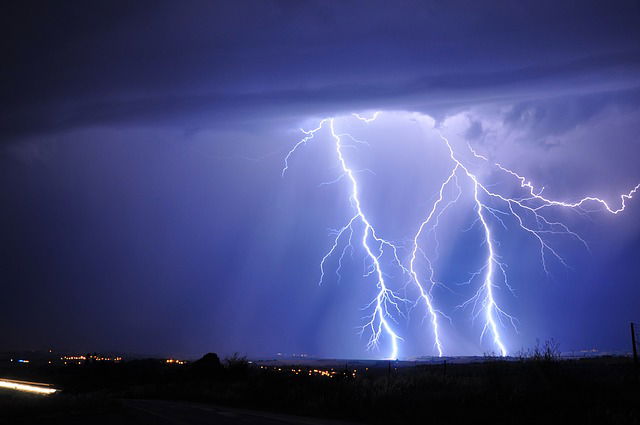
In a new study, researchers found lightning from distant storms may help prevent hackers from damaging electric power substations and other infrastructure.
The research was conducted by a team from the Georgia Institute of Technology.
The electric power grid is difficult to secure because it is very massive. There is an electrical connection from a power generating station to the appliances in people’s home.
There are many places in which a hacker could start an attack in the connection.
One way to is opening substation breakers to cause a blackout.
For example, hackers can open breakers in substations and hack into monitoring systems to convince power grid operators that the grid was operating normally.
In such an attack in 2015, hackers shut off power to 230,000 people in Ukraine.
Previous studies have shown that security personnel could analyze electromagnetic signals that substation components emit.
They can use a monitoring system to tell if hackers are trying to sabotage power stations using remote equipment.
Hackers can also figure out how to insert fake signals to hide their attacks.
Therefore, it is very important to have an independent way to know what’s happening on grid systems.
In the current study, the team found background lightning signals from thousands of miles away, such as lightning from the storm, could help authenticate those signals.
This is because when a lightning flash hits the ground, it forms an electrical path miles tall.
This can potentially carry hundreds of thousands of amps of current and makes a really powerful antenna radiating energy.
In addition, each flash creates signals in the very low frequency (VLF) band. This can reflect from the upper atmosphere to travel long distances.
The signals from lightning can zigzag back and forth and travel around the world.
According to the researchers, security staff who remotely monitor substations can compare the lightning behind the 60 Hz substation signals to lightning data from other sources.
This could authenticate the information. Because lightning occurs more than three million times every day on average, there is plenty of opportunities to authenticate.
They tested this view at substations with two different electric utilities. They also tested the view with extensive modeling and simulation.
The findings suggest that it is possible to remotely detect any attack modifying the magnetic field around substation components.
The team hopes the applications for remote monitoring of other devices could go beyond the power industry.
The author of the study is Raheem Beyah, professor in the School of Electrical and Computer Engineering at Georgia Institute of Technology.
The research finding, radio frequency-based distributed intrusion detection system (RFDIDS), was presented at the 2019 Network and Distributed System Security Symposium in San Diego.
Copyright © 2019 Knowridge Science Report. All rights reserved.



